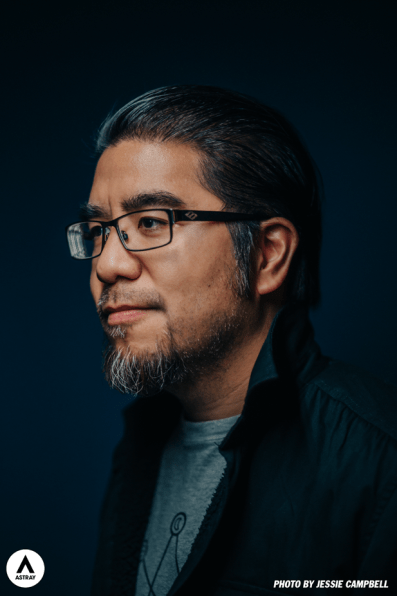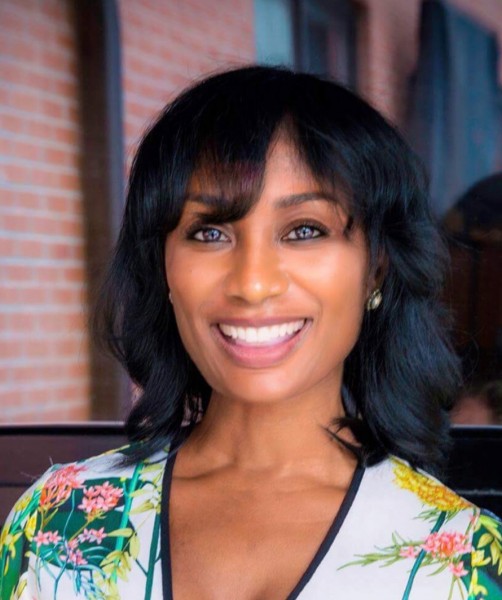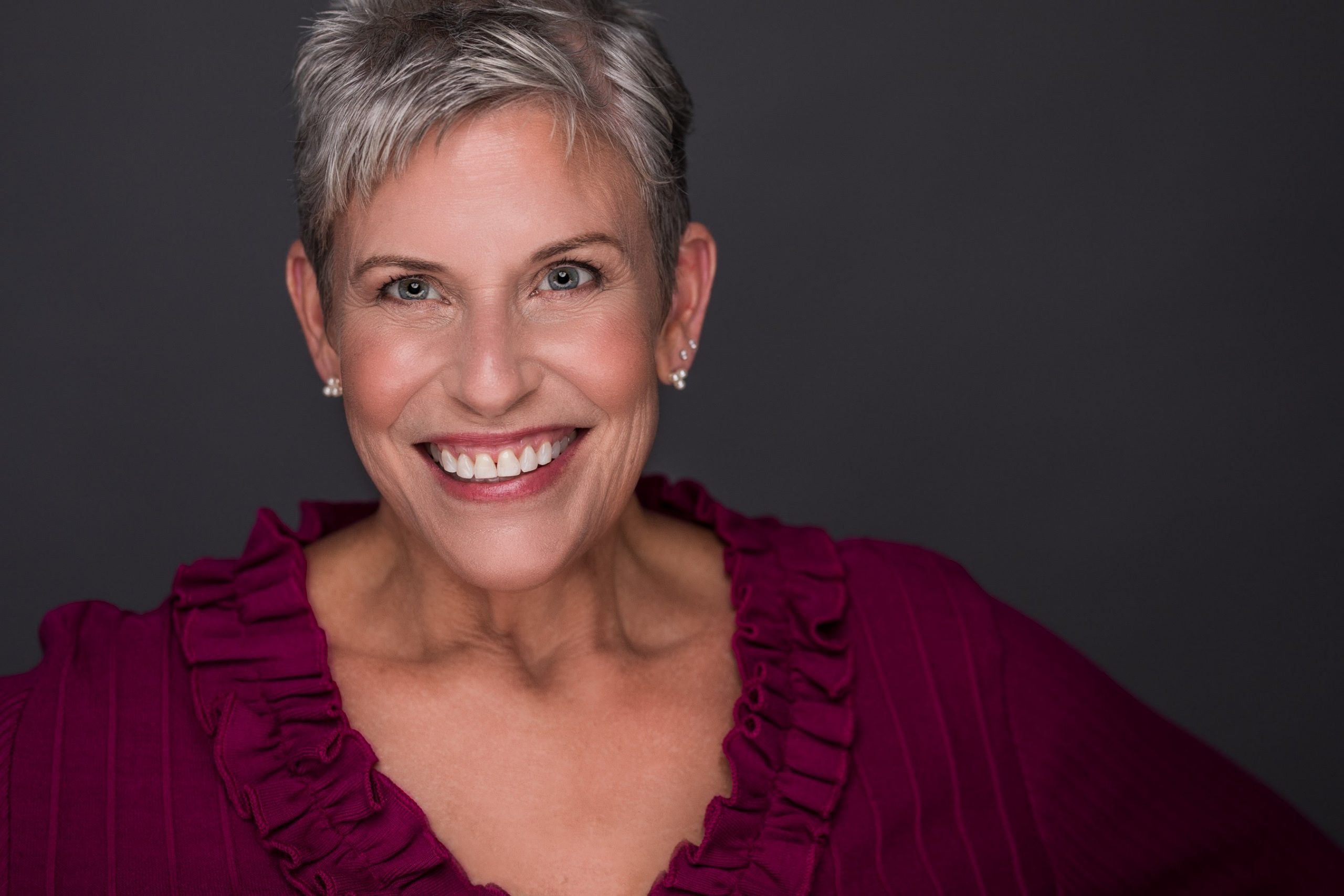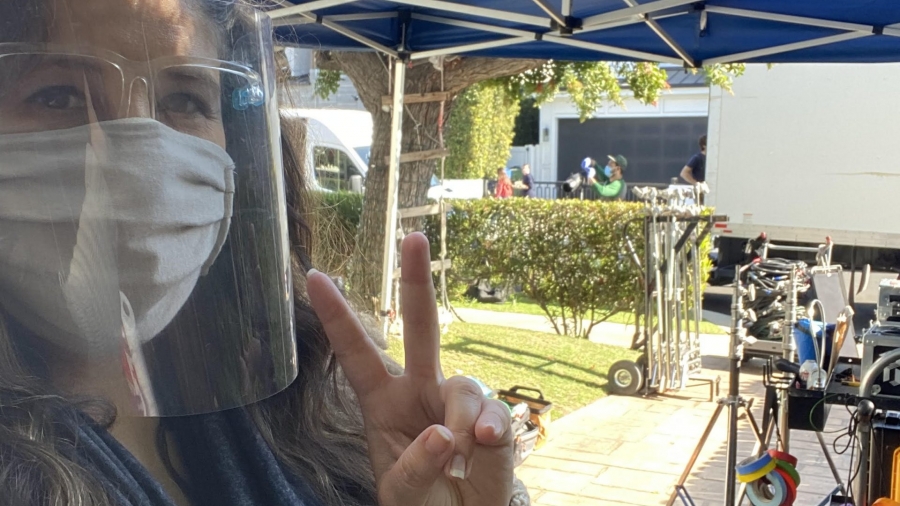Written by Jonah Azurin
When the United States started to shut down last year, many filmmakers and actors thought they’d return to work within, at most, a few months. But with a new administration and new COVID-19 variants over one year later, many are still facing exhausting challenges throughout this industry. It’s been hard to stay motivated with barely an end to COVID-19 in sight, especially in an industry as unpredictable as film. But, the industry is adapting to the “new normal” as efficiently as it can, creatively solving problems as they arise and steering straight in these hazy clouds. As theatres and venues remain closed, the search for new projects still booms despite this extraordinary time.
But how is the film industry adjusting? With funding harder to come by, distribution roadblocks that lie ahead, and COVID-19 restrictions still in place, it seems like a dark tunnel that gets deeper and deeper. Not to mention the shift in film distribution and online streaming services versus movie theatre ticket sales. Here are some foreseeable lasting effects from the COVID-19 pandemic:
We’ll have to be creative with budgeting money and time

Director Joe Carabeo
In addition to expected budget costs for film projects, now there are COVID-19 safety measures to account for. There are many things to consider: Should we ask for bigger loans or investments from production companies? Downsize cast and crew? Or increase the initial budget when crowdfunding?
“When it comes to funding,” Astray Productions founder Joe Carabeo explains, “I primarily work on indie, commercial, music videos, and promotional work so I’d rather bump up the budget to accommodate COVID-19 safety. But it also comes down to time, being smarter about what you do and necessity. Gather what you need for the film and learn how to make money from your project at the same time. [Indie filmmakers] aren’t millionaires and, depending on the project, funding might rely on personal savings. Now, I can only have the essential cast and crew on set but I already have all the equipment I need: cameras, lighting, sound gear. We just need to hire for the normal stuff: crew, talent, and location. If you can get a sponsor, that’s not impossible but that takes a lot of time. How fast do you want to complete your project? If you don’t have a lot of time, ask yourself ‘what can we do right now with what we have?’.”
In Los Angeles, filmmaker and founder of Latino Filmmakers Network Maylen Calienes is developing two film projects . “We are experts at making things look nice and staying creative within our budget. On top of that, we have COVID-19 rules in place. So with the money we have budgeted for each project, how can we create these films in addition to keeping everyone safe? Safety is important, we cannot overlook that. We’re also working with unions and they’re looking at us and how we proceed with each project. We just have to get even more creative than before and find different ways to finish the film and stay within our monetary resource.”
Majority of casting will be virtual
Self-tapes will be the new way of casting, especially since it’s cost-effective. Casting director, professor, and entrepreneur Maggy François says, “ You save money and you don’t have to sit in traffic. But you have to trust your instincts because there are things you definitely have to see in-person. There were times where I loved a person’s self-tape and met them virtually but then on the first day of set, it didn’t work out. You need to be able to see the person’s energy, and there is a big difference when you meet someone for the first time in-person than virtually.”

Casting Director Maggy François.
On-set protocols will remain strict with safety measures
With a lack of physical contact when the cameras aren’t rolling, set culture has definitely changed. Craft services, holding rooms, background talent, and even rehearsal space are all risky when it comes to COVID-19.
Utilizing outdoor spaces will be necessary. Currently, François says that her production has separate outdoor holding rooms. “[Other than] a few exceptions, no one sees each other until they get on set and film whereas before, you can sit and watch the scenes while the camera is rolling to see what’s going on. Even featured background talent has to wait in their cars until we’re ready for them to be on set.”
When asked about set culture, Carabeo joked, “The crafty table is different. Instead of everyone going for the gummy bears and other snacks, they’re going for the face shields. But really, every single set that I’ve worked on has a COVID-19 compliance supervisor, a nurse, or a health representative who makes sure everyone, as well as our filming location, is safe and in accordance with COVID-19 regulations. Before we even start, we go through a certain process to make sure everyone is safe and good to go.”
Calienes said that when working on various network and studio productions in Los Angeles, she has felt safe. “Aside from cast and crew being tested often, production had COVID-19 compliance officers on set who are trained to handle these situations and make sure everyone working that day is abiding by the safety guidelines. Catering and craft services are also handled in a very safe manner where food is handed individually and

Filmmaker and founder of Latino Filmmakers Network, Maylen Calienes
everyone eating has to stay farther than 6-feet apart.”
Calienes also took the extra step and completed COVID-19 safety classes. With this new knowledge and her expertise in production, she has been hired as a producer and a COVID-19 production coordinator, making sure everyone was tested before working. “I held meetings outside every morning during production to go over the day and to remind them about the safety procedures in place,” Calienes said. “I’ll be wearing masks in the future even if this pandemic is contained. I think masks are going to be around for a long time and I’ll wear one just to be effective and not spread germs. I believe in masks and the safety they provide.”
For rehearsal spaces, they either happen virtually or day-of and right on site. Melodie Syah, an actress in the DC area, says rehearsal happened right on site for her last commercial gig. “We ran the scene a couple of times with our masks on but when filming, we removed them. There weren’t that many people on set to begin with and it was very clean. For those of us on set that day, they were only onsite long enough for their scene, then we each waited outside. The production company set up chairs on the street that were 6-feet apart or more with sanitizer stations everywhere. Even when outside we had to be masked unless we were eating. The food was catered but everything was individually wrapped and only the COVID-19 supervisor was handing out food.”
Progressive changes lie ahead
In an industry that isn’t regarded as essential, where is the future headed for filmmakers and artists in general? With more people moving out of entertainment hubs and creating content from the comfort of their homes, should artists be worried about job opportunities moving forward?
Many artists and entrepreneurs figured out a way to creatively produce content amidst the pandemic, as we saw with TikTok’s Ratatouille: The Musical. With social media platforms, it’s a great way to get exposure and create new content. Although this seems obvious that social media can garner exposure for their users, artists produce work that is usually collaborative. Despite its challenges, this pandemic has allowed people to oddly connect in more ways than before.
“Art is always progressive —it should be authentic and personal and I don’t think that’s going to change,” Carabeo says. “We’re always going to have people telling their story. Filmmaking is hard in general but we’ll definitely have people who want to be there, so we’ll see that change. And, I’ll definitely keep wearing masks on set and keep it as safe as I can for everyone. I want everyone to feel comfortable so that it’s one less thing to worry about.”
Syah explains that the arts will get better. “There will be a new normal but until then, all of these extra steps are necessary. Meanwhile, people are super creative in figuring out what to do to perform and make productions happen. For permanent changes, I think it depends on COVID-19 and if it will get worse, but hygiene and learning how to be clean on set — things that people should have been doing all along but didn’t, [such as] keeping surfaces clean — will be permanent. And self-tape! That’s gonna stay for a long time. Live theatre is more at a disadvantage because film and television can control the COVID-19 situation a little better.”

Actress Melodie Syah
Looking forward to the future
This pandemic has altered everyone’s lives, whether through added stress or more barriers to break down. It’s paramount we keep healthy physically and mentally. But with a new administration in place and people turning to the arts for a distraction, we’re bound to see some positive changes in the future.
“This is the time to turn any negative into positive and be proactive in educating yourself and in being prepared for the challenges ahead,” Calienes says, “Whether that’s with COVID-19 safety classes and understanding the new contracts, or creatively. As filmmakers, it’s such a blessing to be creative so take this time to learn as much as you can and start writing, creating, and developing. We have more resources but tighter budgets because of the COVID-19 regulations we must implement. Be prepared and learn what you can about keeping yourself and your team safe.”
François encourages us not to give up. “If you write, write something. If you act, act and put something on YouTube. Create your own content. You just have to find your way in the industry. I advise my students to learn as much as they can about the industry and then make it happen. Be a production assistant on set and see what you like and don’t like. Take advantage of the free programs happening right now because everything is virtual. Network with the right people, connect, and just don’t give up. Push yourself and you’ll get there.”
“I’m lucky enough to still have several clients, “ Carabeo explains, “[We] figured out the proper procedures to go back into production to be as safe as we possibly can. I want to make films, I want to keep doing this and I think if we have to get tested and be as clean as possible, it only seems logical that we should. And get ready to go because there’s going to be a point where everything will get cleared. Be prepared and keep being inspired because that’s what’s going to keep you going. Filmmaking is not going to get any easier but there are people who are trying to make that movie, or your movie, happen. Stay inspired.”
Syah advises, “Since we don’t know how long we’ll be in this pandemic, work on your craft in the meantime because once the entertainment industry opens up, it’s gonna open. Everyone’s situation is different; some could be living with immunocompromised or elderly people so a lot of actors and actresses have to make life-changes that might not involve auditioning or acting for now. But during this time, just work on your craft and stay creative. Keep learning.”
*Special thanks to Maylen Calienes, Joe Carabeo, Maggy François, and Melodie Syah for contributing to this article. Check out their websites and follow them on social media for news and updates on their projects.
Maylen Calienes: latinofilmmaker.org, Twitter @RoyalLatinicity, Instagram @latinofilmmakers, and Facebook @latinofilmmakers
Joe Carabeo: astrayproductions.com, Twitter @AstrayJ, Instagram @Astrayj, and Facebook @astrayproductions
Maggy François: maggyfrancois.com, Twitter @fancyfrancois, Instagram @fancyfrancois, and Facebook @Maggy François, LLC

